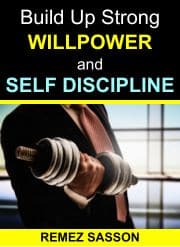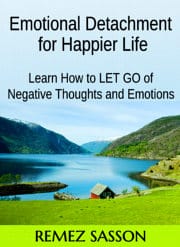
Why do we do things that cause us harm?
We’re pretty rational beings.
A practical, powerful guide to using creative visualization to reshape your inner world and transform your life. Discover the Guide
We want to be happy and healthy.
All are wired to live, survive and thrive.
We know better.
Yet, we continue to overeat, smoke, drink excessively, shop compulsively and engage in a variety of other activities that are detrimental to our health and wellbeing.
Why?
The answer may surprise you.
The Development of Self Destructive Behavior
Internalization of a Negative Belief
Self destructive behavior typically starts with a negative belief about yourself. You aren’t happy with the way you look. You don’t think you’re intelligent enough. You don’t feel worthy of love.
These beliefs are often formed during childhood and can be indirectly communicated to us by others including; parents, peers and society. We internalize these messages which begin to affect all of the decisions we make about ourselves and the world around us.
Though we may not be aware of it, we unconsciously seek to punish ourselves for our perceived inadequacies.
Temporary Relief from Negative Emotions
Engaging in self destructive behavior provides temporary relief from uncomfortable emotions. At first, this seems counterintuitive. Hurting yourself makes you feel better?
Take for example, a man who was taunted in school as a young boy. He learned to dislike himself and developed extreme social anxiety. As a coping mechanism and a way to avoid feeling, he begins smoking.
Smoking significantly numbs him, reducing his anxiety and enabling him to deal with daily stressors. Though the cigarettes are damaging to his health, the immediate relief he receives is enough to outweigh any potential long term negative consequences.
Habituation
Overtime, these self destructive behaviors become habitual. You may no longer feel you have control. You may not even remember when and why they began.
Paradoxically, the original emotion that triggered the self destructive behavior may no longer be present. The coping mechanisms you developed at a young age have now essentially become outdated.
Eliminating Self Destructive Behavior
Knowing where to begin seems to be the most difficult part of making healthier choices and eliminating self destructive behavior.
You may be wondering if you change the behaviors first and see what emotions come up. Or, do you explore the root cause of the self destructive behavior now and worry about changing the patterns later?
In other words, do you approach this behaviorally (change the habit) or psychologically (change the belief)?
The answer is both.
You must address the belief and behavior simultaneously to affect lasting change.
Psychologically: Understand Why You Engage in the Behaviors
It helps if you develop awareness and take responsibility for your behaviors in order to change them.
In an effort to protect ourselves, many of us have developed negative coping mechanisms to push deep seated issues below the realm of our conscious awareness. We are afraid to deal with what might be there so we suppress, ignore and mask sources of emotional pain.
Though it may be unpleasant, I encourage you to open yourself up. This is more easily done when you apply the principle of “no blame, no praise.” Do not attach positive or negative value to what you discover. Simply allow it to reveal itself to you.
Look back at when the self destructive behaviors began. See what thoughts and feelings emerge. What was happening at the time? What decisions did you make? Discovering what was there in the past will give you greater ability to make healthier choices in the present.
Behaviorally: Develop healthier ways to reduce uncomfortable feelings and emotions
In childhood, we have a limited way of dealing with negative experiences and emotions. We all did the best we could with the information and resources available to us at the time.
As an adult, you now possess greater insight, knowledge and skills. You have the power to choose healthier ways of coping.
One way to change behaviors you don’t like is to find the positive intention behind the behavior.
Assume there was a good reason why the particular behavior developed.
Maybe it helped you avoid feeling anxious. Maybe it allowed you to ignore something you didn’t want to deal with.
Maybe it provided you with a sense of power.
After you identify the positive intention behind the behavior, take a few minutes to brainstorm new, current ways to accomplish the same intention. Make a list of 3-5 things that you can do now, instead of the old behavior, and pick the one that feels right to you.
The next time you feel yourself slipping into a pattern of self destructive behavior, stop! You can consciously choose a new way of being in the world.
What decisions will you make today?
About the Author
Alana Mbanza is the Content Editor of Green Psychology, a site dedicated to effective communication skills, healthy relationships and personal development.


